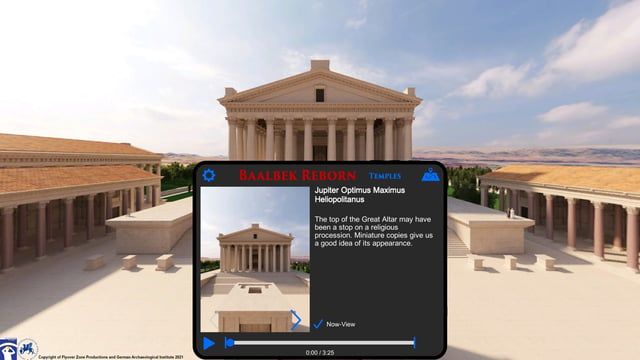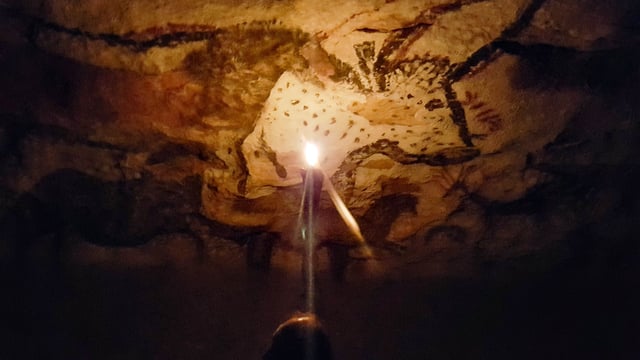Germany has a long tradition of working at the archaeological site of Baalbek in Lebanon. In November 1898 Emperor Wilhelm II and his wife passed through on their way to Jerusalem. The Kaiser was no stranger to Roman ruins, just a year earlier he had ordered the reconstruction of Saalburg, the Roman fort near Bad Homburg in German. Within a month he had archaeologists working at Baalbek. And German archaeologists have been excavating the site on and off ever since. Now, after more than two decades of research, the German Archaeological Institute in collaboration with Fly Over Zone and the Lebanese General Department of Antiquities have produced an engaging virtual tour of the extraordinary temple complex at Baalbek.
- Thomas Dowson
- Last Checked and/or Updated 25 January 2023
- No Comments
- Reviews, Virtual Experiences
The temple complex of Baalbek had been attracting tourists long before Kaiser Wilhelm’s visit in 1898. In providing information for those travelling from Damascus to Beruit, Cook’s Tourists’ Handbook for Palestine and Syria, published by Thomas Cook & Son in 1876, suggests overnighting in Baalbek. “It is usual for the camp to be pitched in the court of the Great Temple, where it presents a curiously-picturesque effect.” As wonderful as that experience must have been, I hasten to add that camping amongst the ruins now is not allowed.
We now call that ‘great temple’ the Temple of Jupiter, as it was dedicated to Jupiter Heliopolitanus. It is the largest temple ever constructed by the Romans. Although very little of it remains standing today it is still well known for its six surviving colossal columns. These columns are the largest single pieces of carved stone ever quarried by humans anywhere in the world, past and present. They stand on a large podium, which is itself around 15 m high, and are 25 m high with a diameter of 2.5 m. When the temple was complete there were 54 of these columns.
Disclaimer: As this post is about a product that is available free of charge for all, we did not receive payment in cash or kind for writing this review. We only recommend services and products that we have used and/or would use ourselves. Read more about our policies in our Code of Ethics.
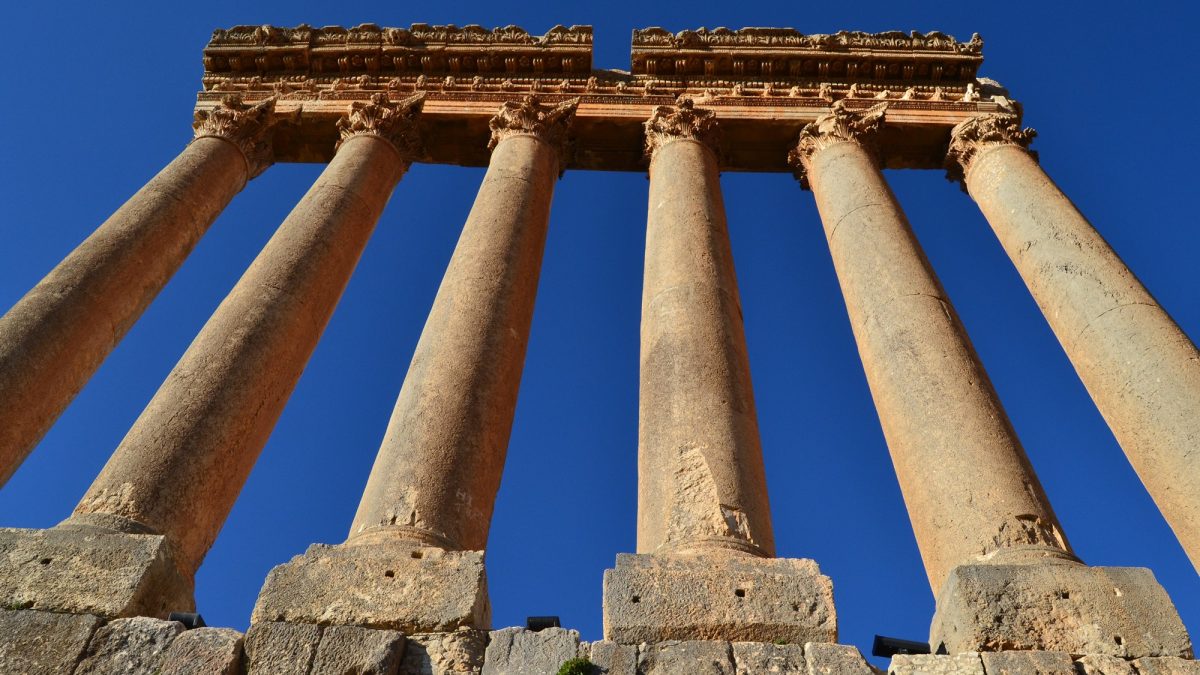
If the Temple of Jupiter was the biggest Roman temple, the adjacent Temple of Bacchus is one of the best preserved Roman temples. It ranks alongside such examples as the Maison Carrée in Nîmes and the Temple of Augustus and Livia in Vienne. The temple complex at Baalbek, at the heart of a settlement that is at least 10,000 years old, has some of the finest examples of Imperial architecture to be found anywhere in the Roman world.
Not surprisingly then Baalbeck was added to the list of UNESCO World Heritage Sites in 1984. And now a collaborative project involving three partners has created a virtual application of the Baalbek temples. Allowing us to explore them in all their past and present glory.
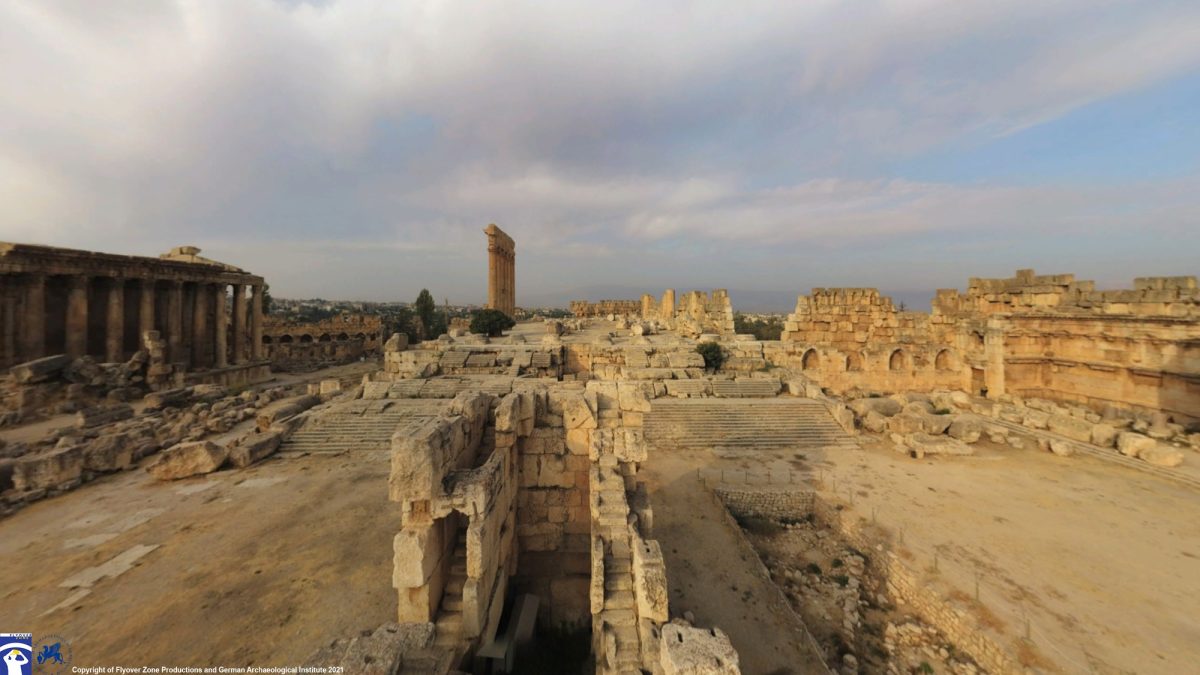
Baalbek Reborn | Temples
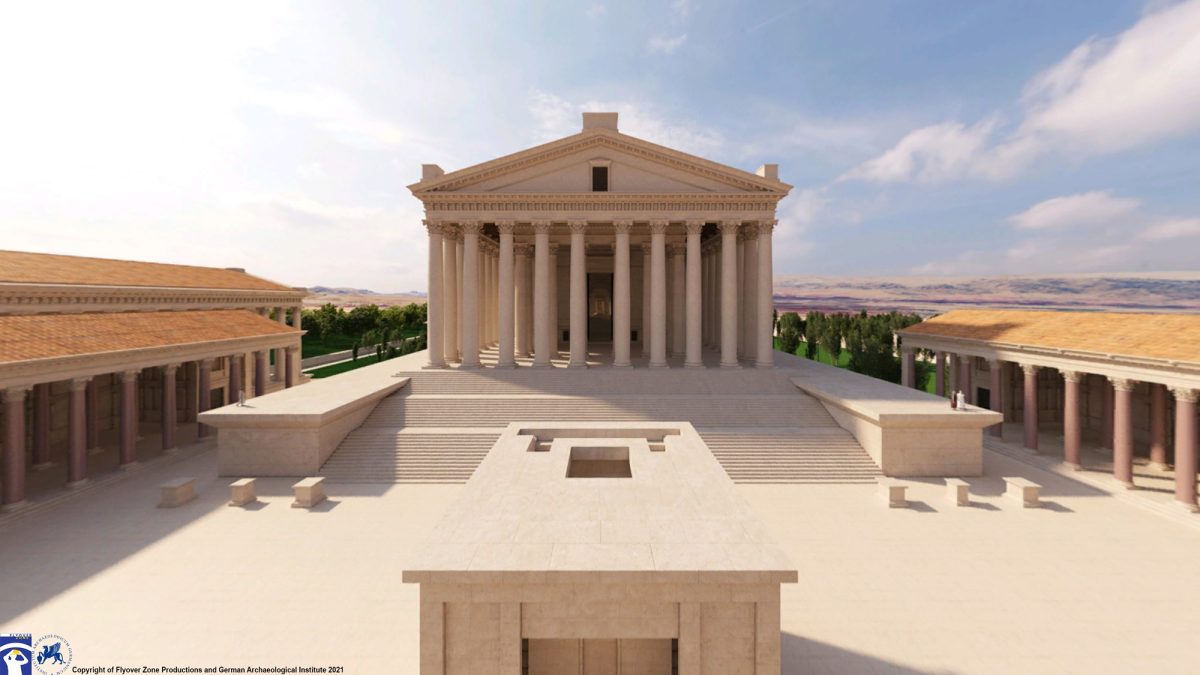
Baalbek Reborn is a new, free virtual experience launched on 31 March 2021. Using state-of-the art digital technologies and archaeological findings from decades of research, 3D reconstructions show what Baalbek’s ruins looked like in the in the third century AD. These reconstructions include the Temple of Jupiter Heliopolitanus, the Temple of Bacchus, the Temple of Venus and the Temple of the Muses.
The three collaborative partners are the virtual tour company Flyover Zone Productions, members of the German Archaeological Institute who provided the content and archaeological oversight, and Lebanon’s Ministry of Culture – Directorate General of Antiquities, which is responsible for the protection, promotion, and excavation activities in the country’s national heritage sites.
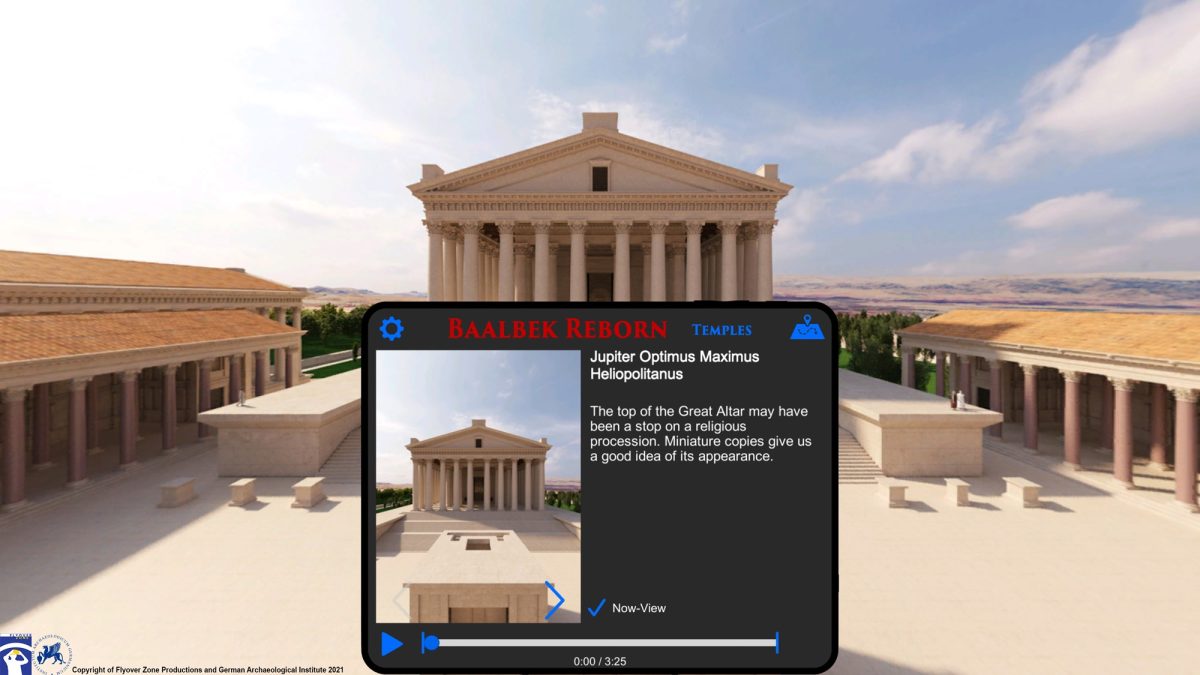
The virtual experience includes over two hours of content. This includes 360° panoramic photographs showing the ruins today, each of which is matched with 3D reconstructions showing what the structures looked like in the past. The resolution on the photographs and the 3D reconstructions is very good, allowing you to zoom in on both without loosing clarity. These are accompanied by interesting text and audio clips that provide research-based explanations of what you are looking at.
The app starts with an interesting five minute introduction to the site, which includes a few of the basic instructions to get you started. There is a more more detailed tutorial that allows you to get to grips with the app and enhance your virtual tour of Baalbek. From my own experience, however, I find the app to be intuitive. But I do recommend you listen to the introduction, then explore as you would an archaeological site.
You can take the ‘guided tour’ – a 38 minute introduction to the highlights of the Baalbek temples. Or you can click on the map of the temple complex and head straight to the points of interest that interest you. In total there are 38 points of interest for you to explore.
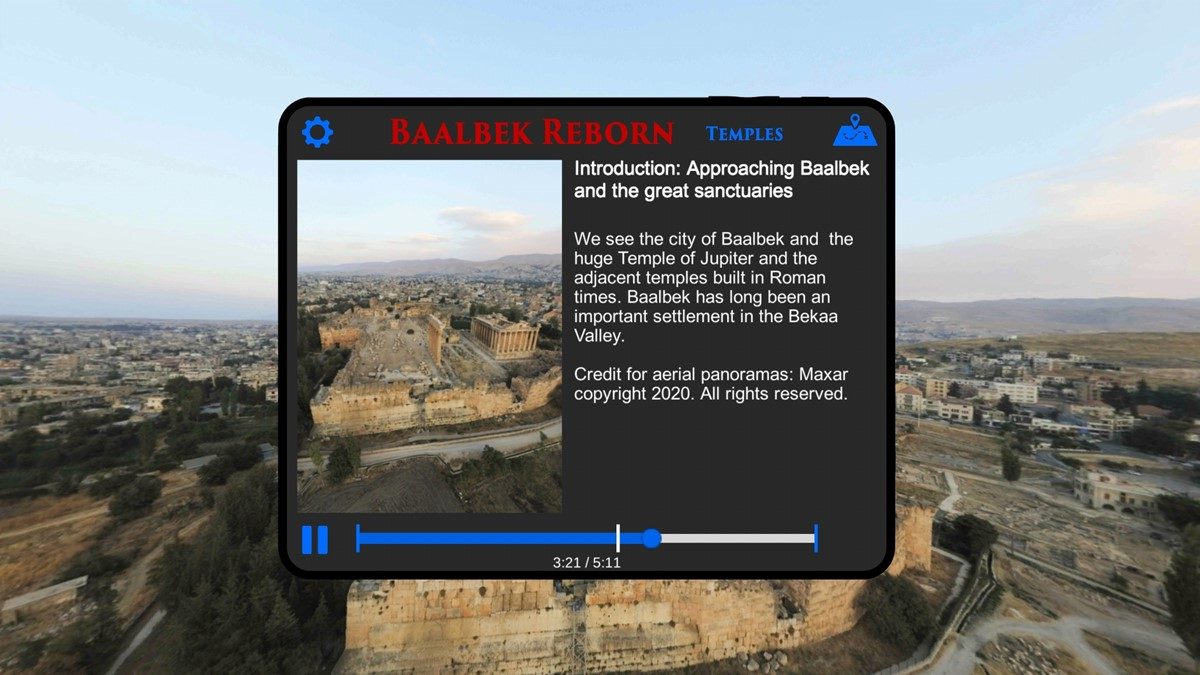
On What Devices Can I Use the App?
The app can be used on any device, from your desktop, to your laptop, your iPad to your smartphone. You can download the app for free on the Apple Store, Google Play, Steam store (PC, Mac, or HTC Vive – virtual reality headset), or the Oculus store (VR headset).
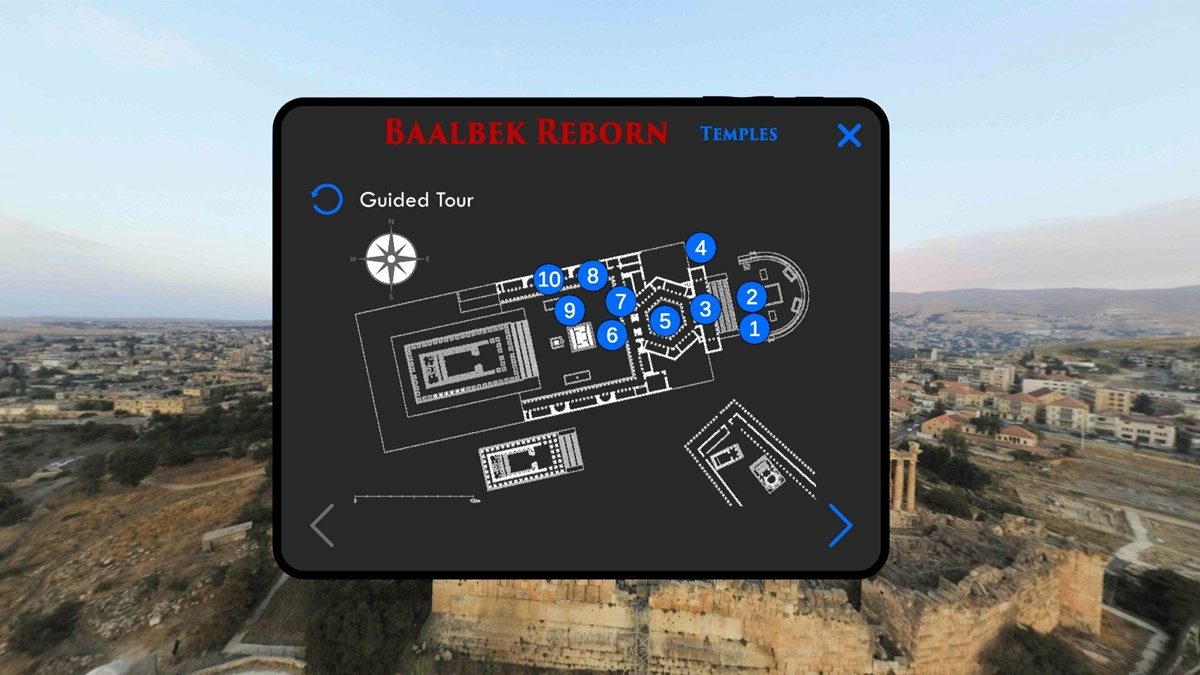
Where Can I Download the App?
Use the following link to see all download options for Baalbek Reborn.
Given the price of comparable apps (and some not so comparable virtual tours), yes downloading and using the Baalbek Reborn is free, gratis and for nothing. This is possible through the generous funding of the project by Bassam Alghanim, who made the donation in memory of his parents, Yusuf and Ilham Alghanim, who used to take him to the archaeological site when he was a young boy.
Baalbek Roman Temples on Google Streetview
As magnificent as the photographs and the 3D reconstructions are, one thing I did miss in the Baalbek Reborn virtual tour is the ability to be able to move virtually from one point of interest to the next. On Google Streetview you can virtually walk about the ruins, but without the excellent commentary of course. My recommendation is to learn about the temple complex on the app: take the guided tour and then explore the site at your own direction, and then to use Google Streetview to explore the ruins as you would if you were there today (instructions below if you require these).
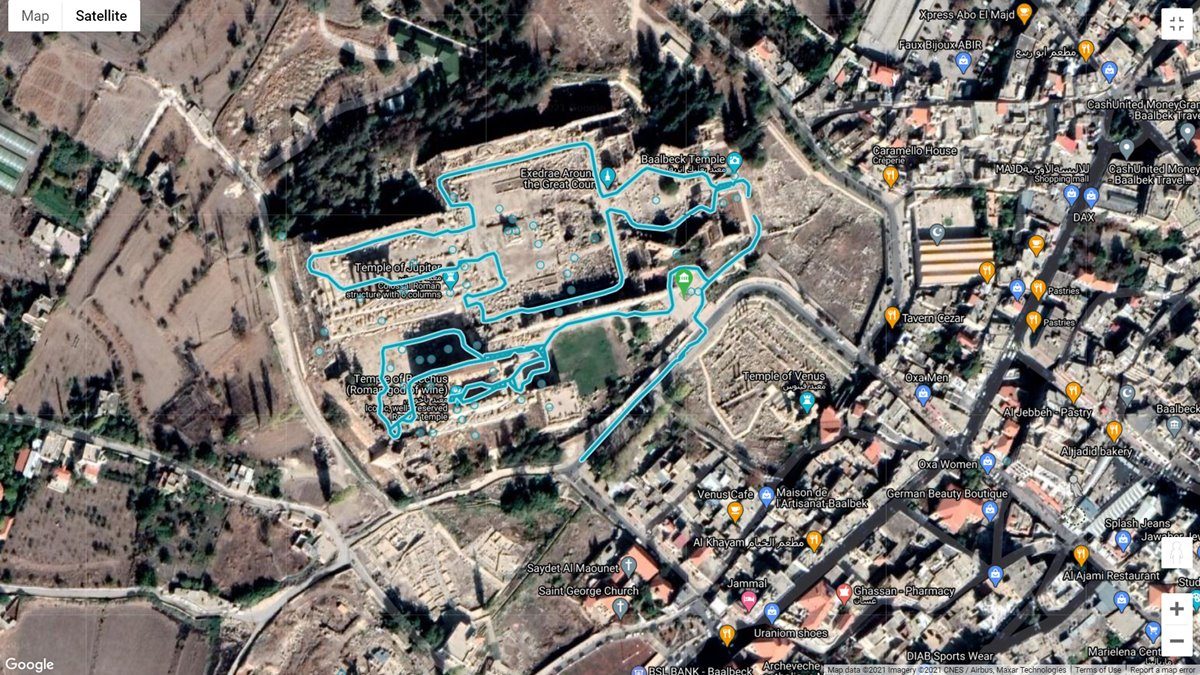
To see the Baalbek Temple Complex on Google Streetview, click through to Baalbek on our Interactive Map of the Roman World. Drag the yellow pegman from its position in the lower left corner onto the map and drop it onto one of the blue lines or dots. If you are unfamiliar with Google Streetview, see our instructions on using Google Streetview to virtually visit archaeology sites and museums.
More Virtual Resources for Baalbek
Google Arts and Culture – has a collection of 117 historical photographs and drawing of the archaeological site. Some of these date back to the early second half of the 1800s.
Sursock Museum Virtual Tour: Baalbek, Archives of an Eternity – in early 2020 the Sursock Museum in Beirut hosted an exhibition telling the history of Baalbek from its origins to the contemporary moment, using archaeological, ethnographic, anthropological, cultural, and artistic perspectives. The exhibition is now available as a virtual tour, with excellent resolution – allowing you to read the exhibition labels. Some of the historical paintings brought together for this exhibition are quite something.



